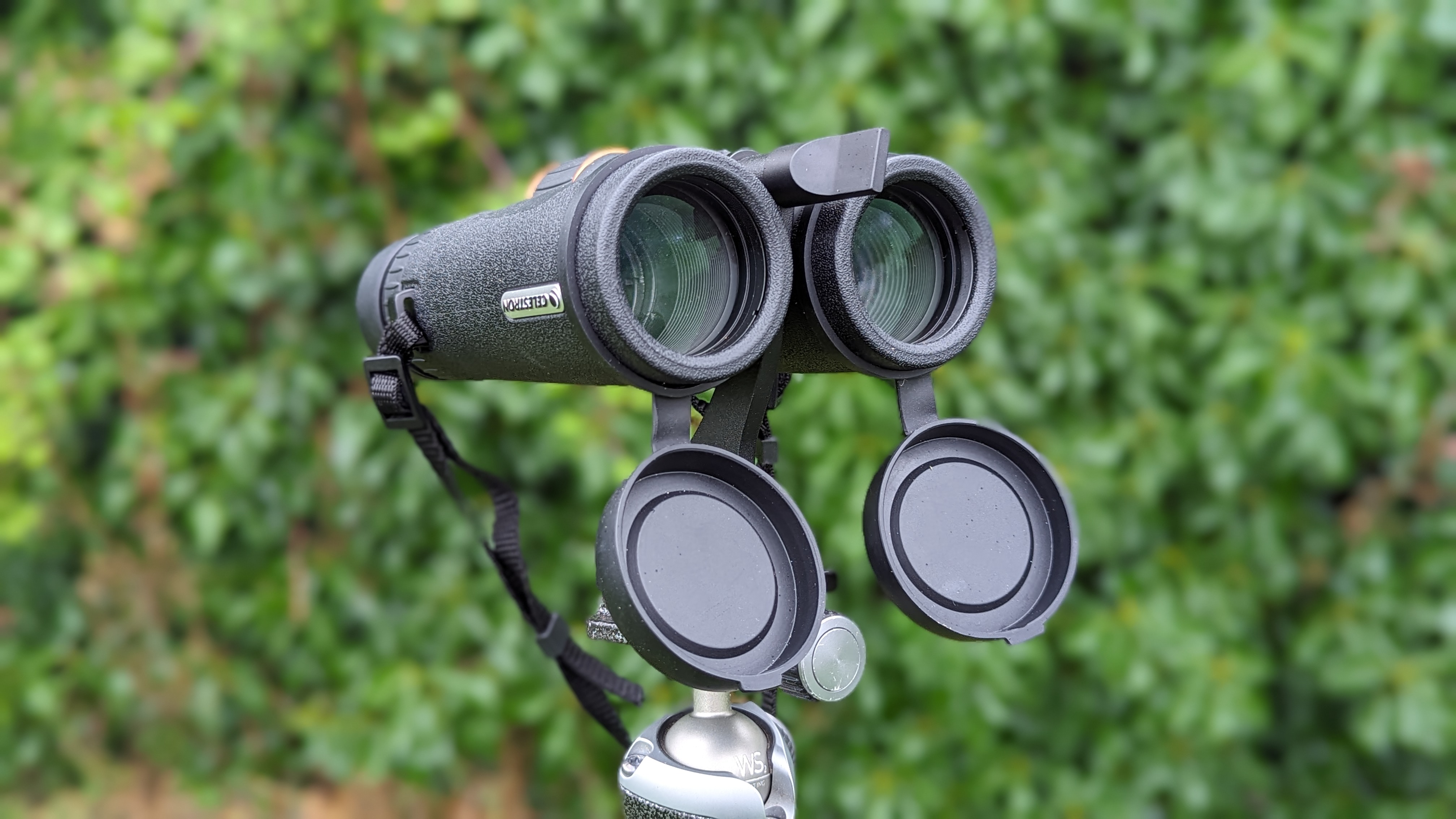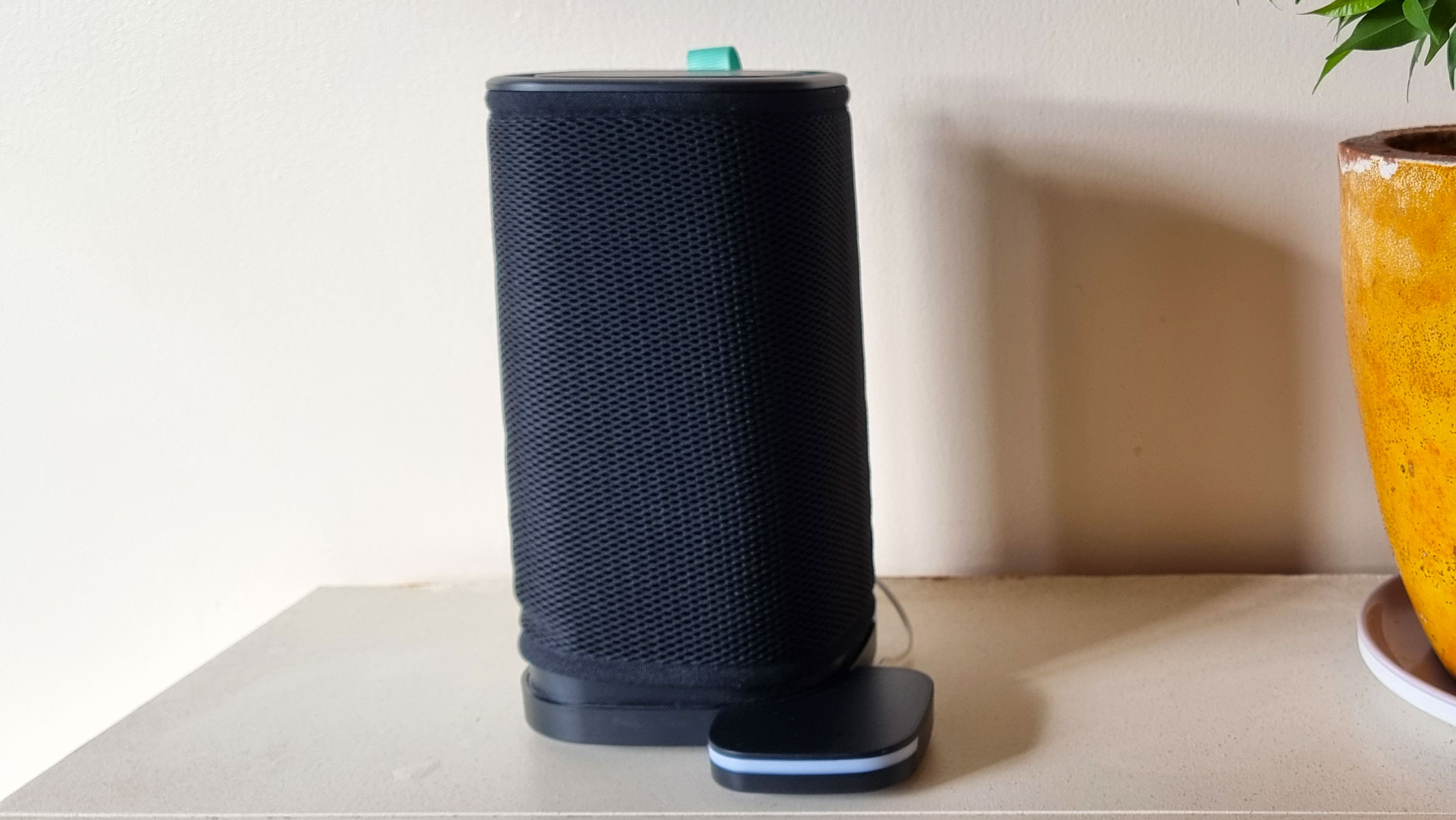Live Science Verdict
A reliable and well-finished binocular, the Celestron Regal ED 10x42 is chock-full of high-end optical technology. Its glass quality and lens coatings are excellent and we'd happily recommend these for any generalist observer.
Pros
- +
Excellent premium finish
- +
Good grip and texture
- +
Sharp, bright views
- +
Very comfortable neckstrap
Cons
- -
Focus wheel is a little too free
- -
Carry bag doesn't fit binocular and neckstrap
Why you can trust Live Science
The Celestron Regal ED 10x42 has been specifically designed with optical quality and a premium finish in mind. These binoculars also come in an 8x42 model but both binoculars feature a roof prism design which means they are both light and slim, ideal for travel.
Retailing just shy of $400 these binoculars sit right in the middle between a decent entry-level pair like the Nikon PROSTAFF P3 8x42 and more expensive image stabilized options such as the Canon 10x42L IS WP binoculars. They're a good purchase for anyone who regularly uses binoculars for wildlife watching, hunting or other general observing and require good all-round quality but don't want to drop four figures on a pair.
Design: Roof prism
Magnification: 10x (8x also available)
Objective lens aperture: 42mm
Angular field of view: 6.5 degrees
Eye relief: 20.2mm (0.79-in)
Weight: 27.1 oz (768g)
Dimensions: 5.9 x 5.1 x 2.2-in (152mm x 130mm x 57mm)
A whopping depth of eye relief makes these binoculars ideal for anyone who normally has trouble using binoculars due to wearing spectacles and their minimum interpupillary distance (the distance between the eyepieces) is adequate enough for those with narrow-set eyes or for children.
This 'premiere line' of performance binoculars from Celestron impresses with BaK-4 glass and full phase and dielectric coatings, combined with the extra-low dispersion elements ensure views are expansive, sharp and bright. But are they worth the money and how do they stack up compared to the best binoculars on the market?
Celestron Regal ED 10x42 binocular: Design
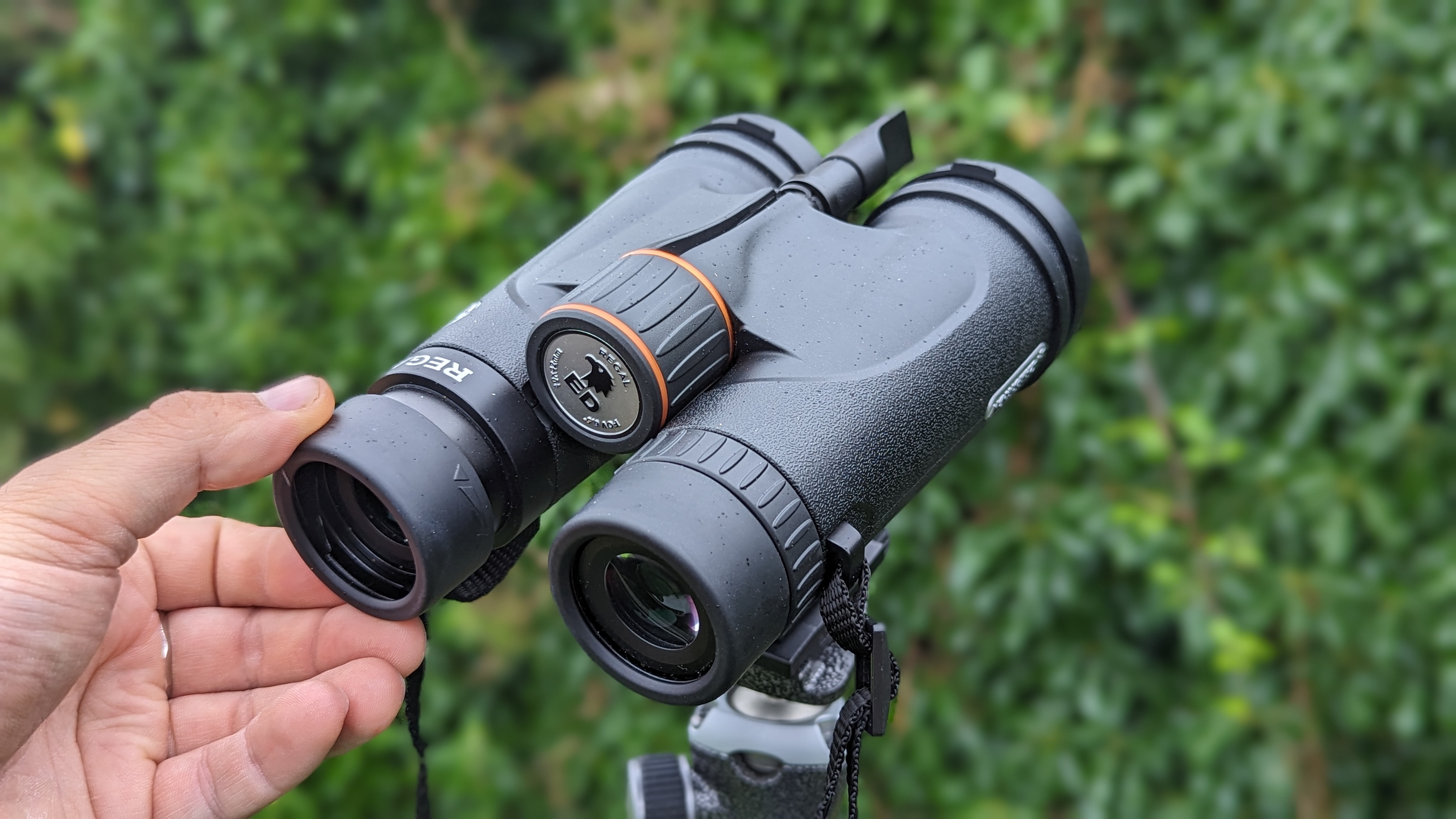
- Comfortable, all-over textured rubber with thumb and finger indentations
- Gorgeous copper color flashings on tripod mount and focus wheel
- Comfortable neck strap is one of the best on any binoculars tested
Even retailing at nearly $400 all the binoculars we've tested at this price point usually have a caveat, being great in a lot of areas but with one big 'but'. However, the Regal EDs are surprisingly high-end all round.
The rubber that encases the binoculars is soft and grippable but not so soft as to not feel protective. The fact there is texture all over the binoculars appeals to us with many manufacturers opting to texturize only small points of contact on the body. The front lens caps fit snugly over the lenses, as does the eyepiece caps which come together in one piece and can be threaded onto the neckstrap to avoid losing them.
Entirely black save for gorgeous copper flashings that encircle the tripod mount and focus wheel, these binoculars are inconspicuous and would equally suit a hike or a few hours in a bird hide.
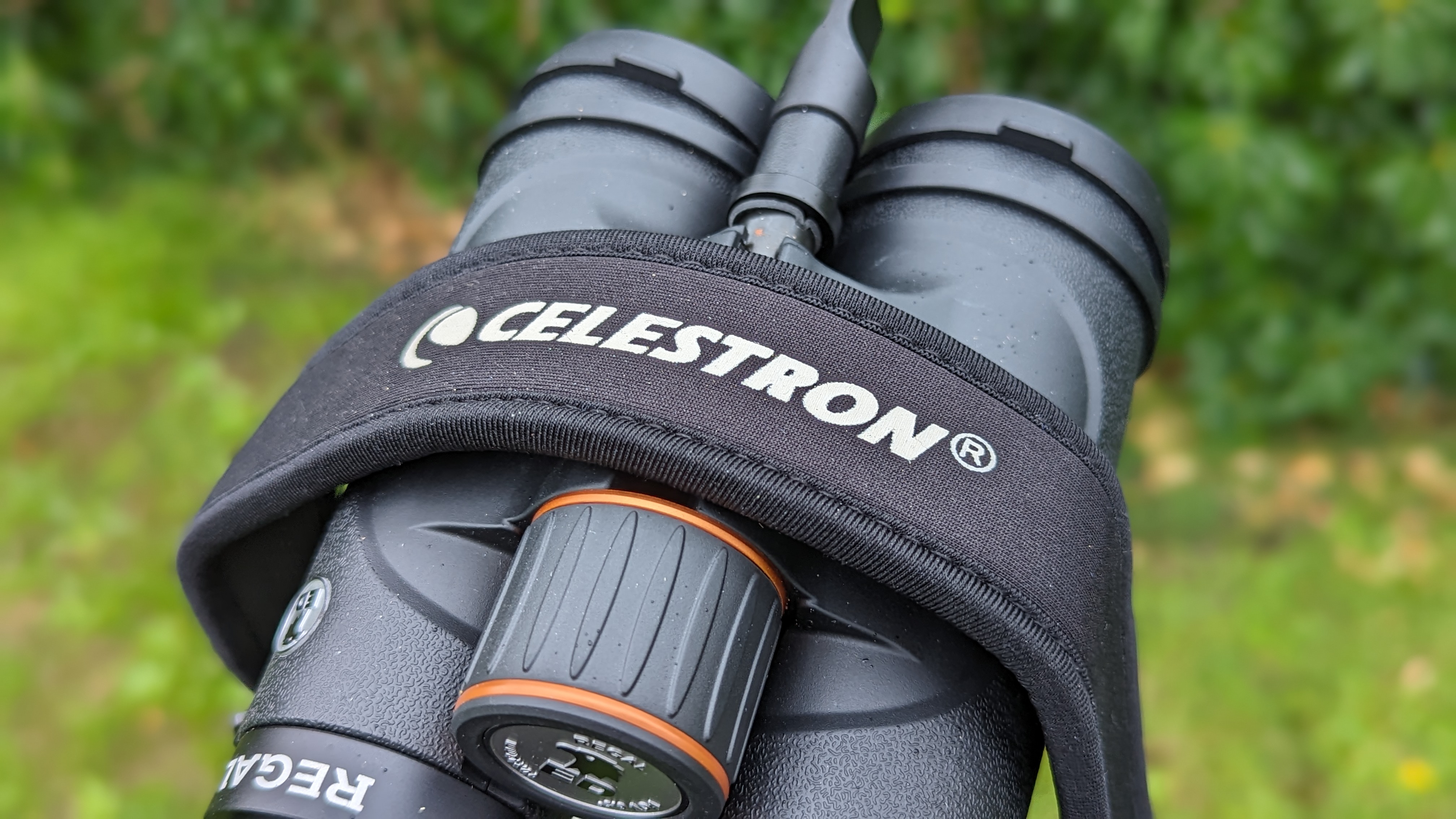
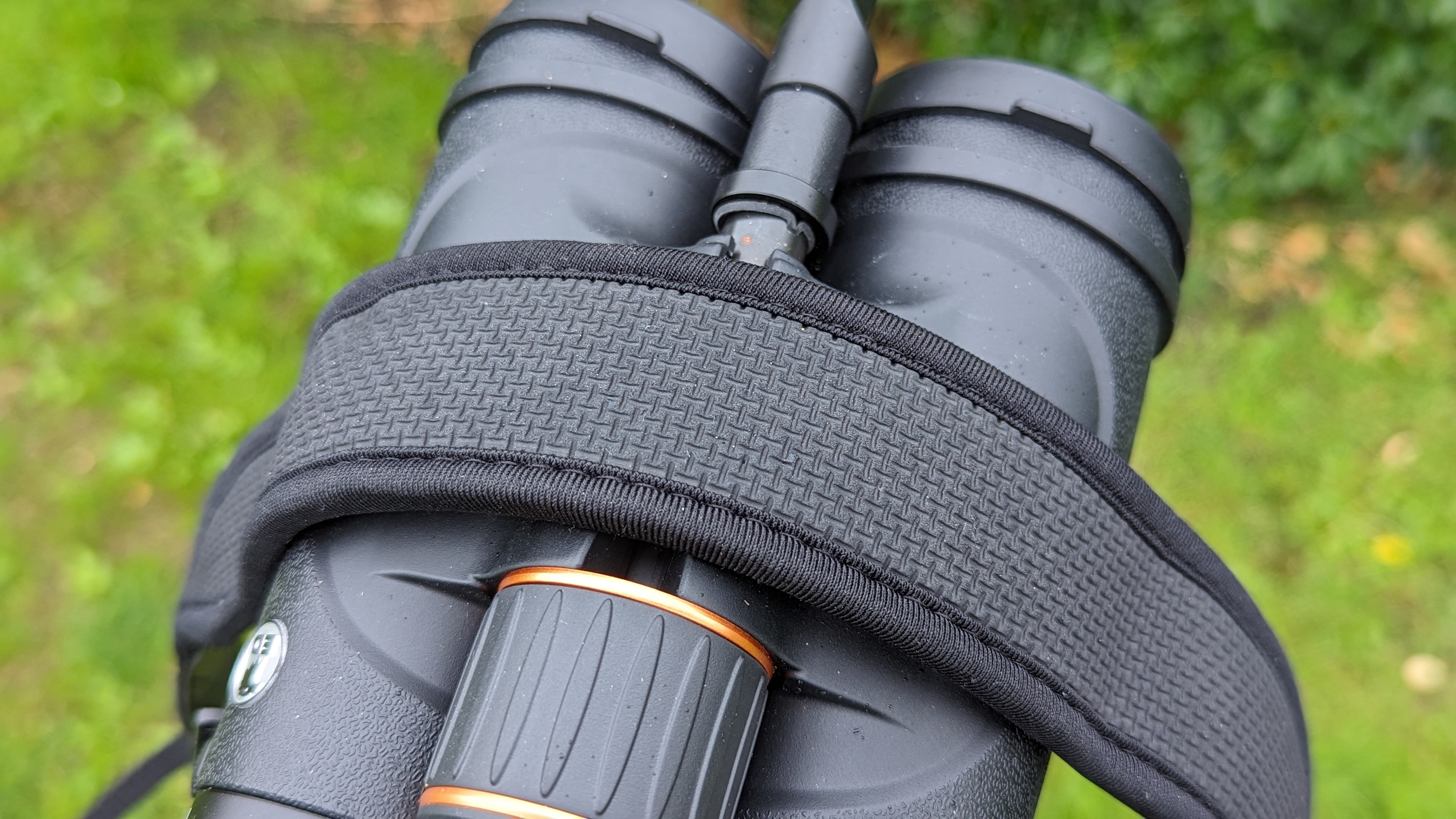
The neckstrap is likely one of the best out-of-the-box we've ever tested. At 1.57-inches (40mm) at its widest point and 0.27-inches (7mm) thick the padded neoprene strap is backed with a smooth fabric finish which feels comfortable to wear around the neck or across the body (yes, it's long enough). Something that stood out to us was the seemingly upside-down Celestron badge on the right barrel which, when you hold them up to your eyes, was upside down on our model. Bizarre, but looking at their stock images it seems an anomaly.
Celestron Regal ED 10x42 binocular: Performance
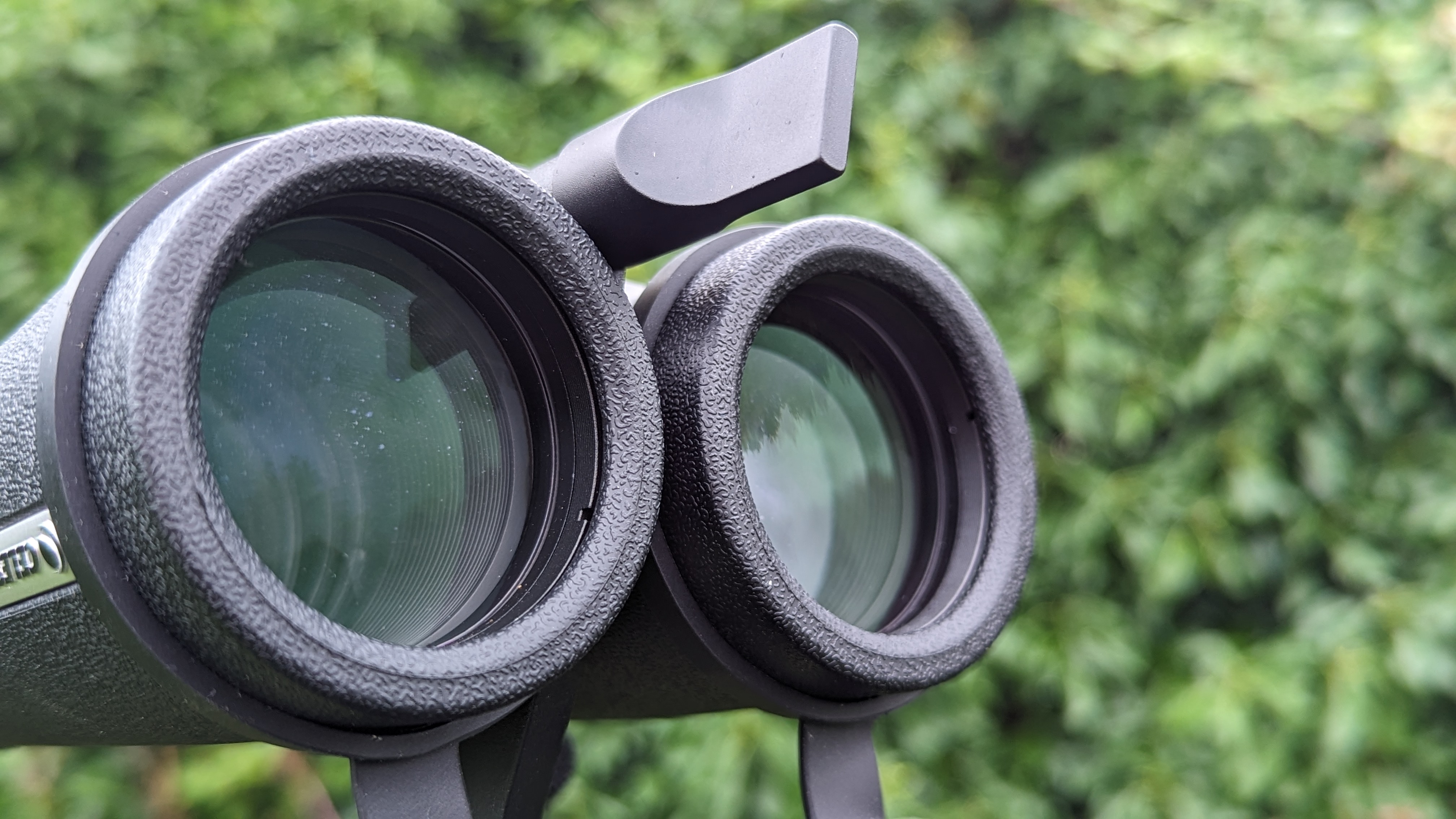
- Field flattening optics give expansive, undistorted views
- BaK-4 glass ensures the very best light reproduction
- Fully multi-coated optical elements reduce glare and prioritize light throughput
The main problem binocular manufacturers face is gathering light, preventing it from spreading to create color fringes on subjects and maximizing light transmission through the glass elements to create bright views. Luckily, that's where the Regal ED binoculars excel thanks to a whole host of optical technologies combined into one product.
Using the superior BaK-4 glass the Regal EDs have fully multi-coated elements throughout. This is different to just 'multi-coated' or 'fully coated' in so much as every piece of glass that is exposed to the air contains multiple coatings to prevent reflections and flares that would otherwise impede light passing through the binos.
Contrasted edges are normally where color fringing occurs if it is to be noticed. We could see minimal chromatic aberration (color fringing) around subjects even when looking at dark tree branches with a bright overcast sky as the backdrop which was impressive. That's due, in part, to the extra-low dispersion elements inside the binoculars and where the Regals get their ED naming convention.
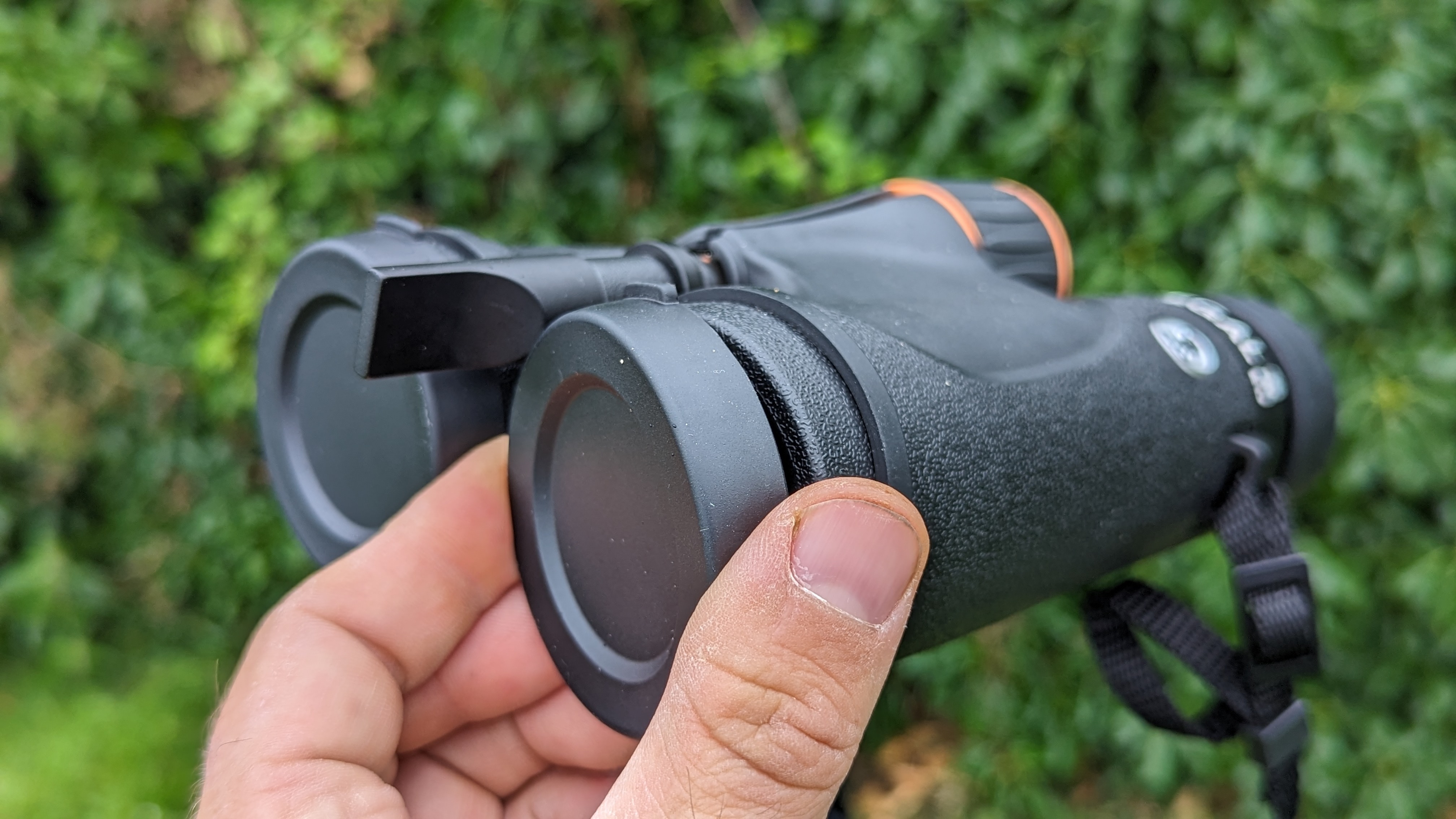
The views felt expansive despite these roof prisms having a pretty standard viewing angle of 6.5 degrees. That's because Celestron has taken the field-flattening technology from their spotting scope products and transferred them into the Regal EDs. Field-flattening glass elements are designed to counteract the naturally convex design of binocular glass to allow edge-to-edge sharpness across the image circle. This is evident when peering into the corners during use, with most binoculars blurring into obscurity, whereas these binoculars are still pin-sharp.
Celestron Regal ED 10x42 binocular: Functionality
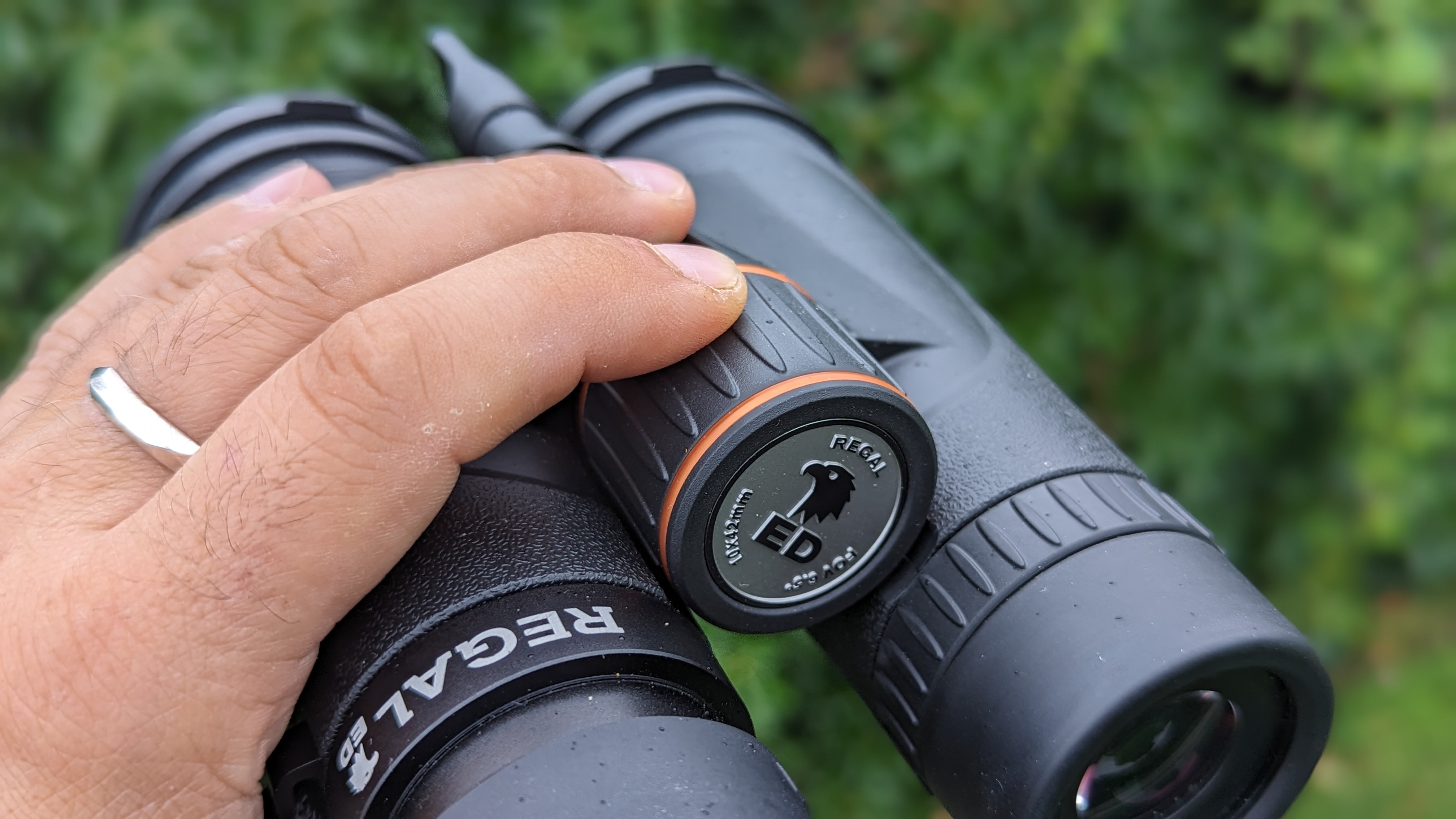
- Binoculars and neckstrap don't both fit in the carry case
- Focus wheel too free for our liking
- A stiff hinge means interpupillary distance is easily maintained
One of the most frustrating aspects when using binoculars having settings knocked as one takes them in and out of their bag. However, the settings are maintained throughout. Due to the Regal ED's reassuringly stiff hinge, the interpupillary distance was kept in place for several days without a problem which meant we could get them out of the carry bag quickly and observe birds before they disappeared past us.
The diopter on the right lens barrel was also stiff enough to resist defocusing, even when we accidentally caught it with our thumb now and again. But the focusing wasn't perfect. Personally, we thought the focus wheel was a little too free, meaning a quick graze with the fingers had subjects out of focus and a missed observation. This is quite subjective and perhaps a quirk of this specific unit we were reviewing but if you're someone who likes a little more resistance when pulling focus then it'll take some getting used to the Regal EDs.
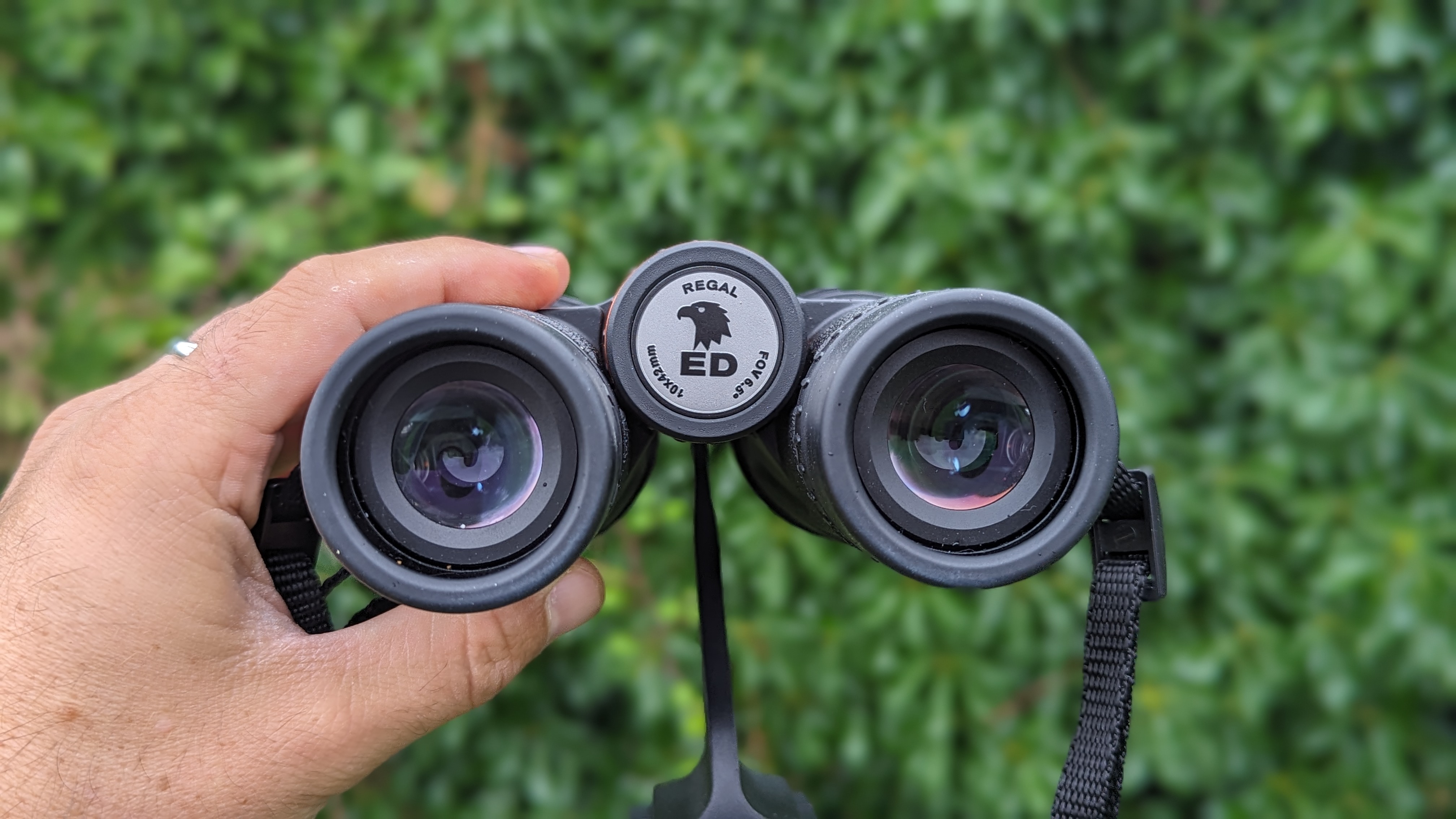
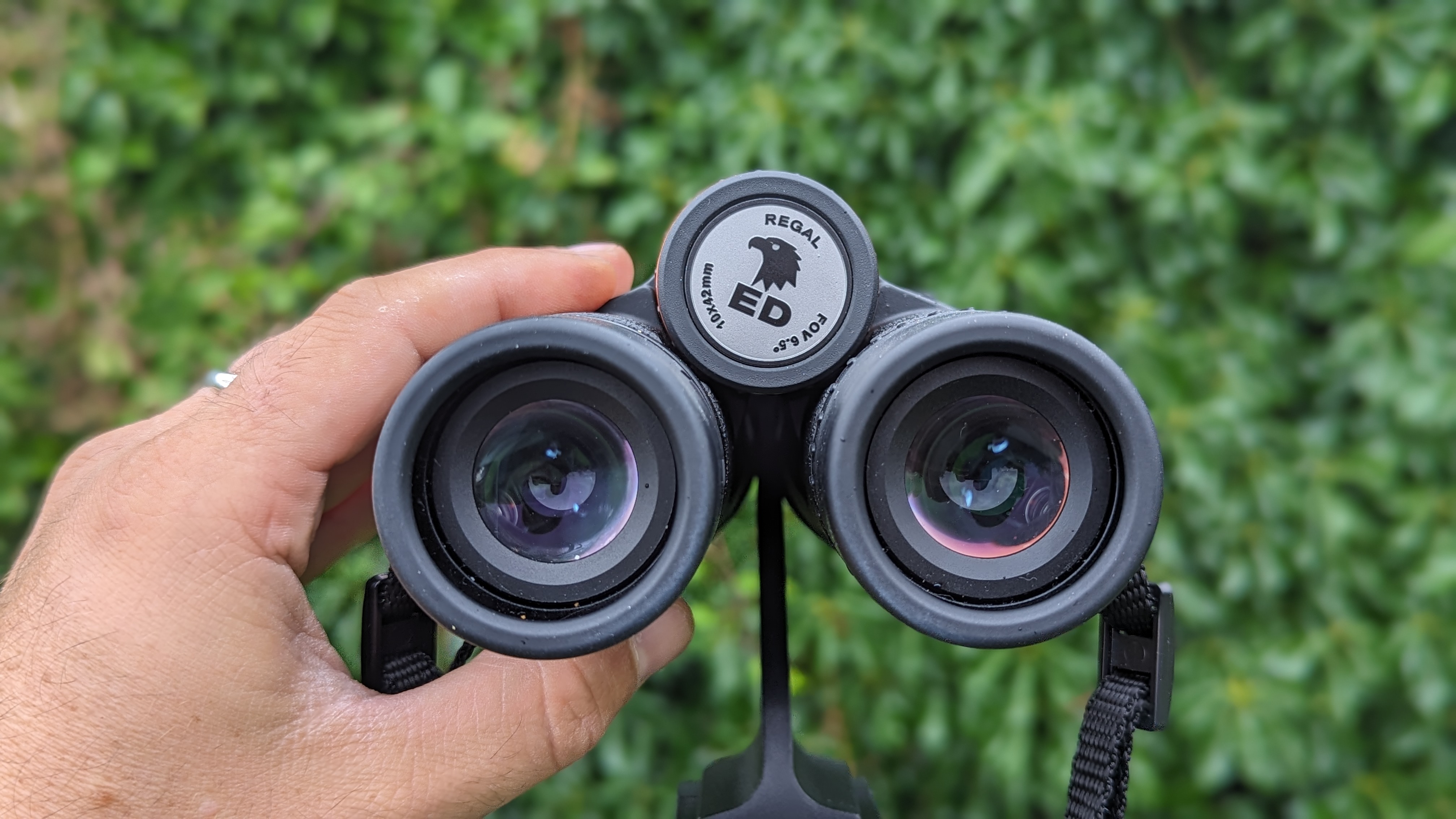
Overall, the Regal ED 10x42s are fantastic binoculars but it's one of the first binoculars we've had to set up the eye relief to accommodate our viewing. We don't wear eyeglasses but the eye relief had to be set at its first position in order to get a decent image circle. Now, this is probably due to the massive 20.2mm eye relief adjustment present on these binoculars and we can confirm this is definitely the pair of binoculars to get if you wear eyeglasses. But it was a departure from the 'set it and forget it' approach we have had to other binoculars where the minimum default setting was adequate.
We also noticed that there is quite strong vignetting when turning our eyes during observation. Binocular users are always encouraged to move the binoculars not their eyes, but the Regal EDs were particularly strong on the vignetting when doing this, likely because of the field-flattening lens. But this shouldn't put you off buying them as it only takes a short while to get used to this.
Should I buy the Celestron Regal ED 10x42 binocular?

For a mid-priced binocular that is Celestron's premiere performance binocular, the Regal ED 10x42s we tested in this review were excellent. Good value for money and myriad adjustments for any kind of observer, whether narrow or wide-eyed or if they need to wear spectacles whilst observing, they're versatile and reliable.
A well-built binocular there's little that can out-compete these binoculars at this price point save for the slightly more expensive Nikon Monarch M7 10x42. The Regal EDs are best suited to those that want to invest in a decent pair and will use them regularly but don't have thousands to spend.
If this product isn't for you
Of course, there are always those with tighter budgets and for that we'd recommend the Celestron Nature DX 12x56. We rated them four and a half out of five stars when we reviewed them last year but if the 12x magnification is overkill and 56mm objective lenses too large Celestron also sells the 10x42 to match the Regal EDs tested here.
Sometimes you can find the Olympus 8x42 Pro binoculars on sale and slightly cheaper than the Celestron Regals. Dust-repellant and waterproof these binos can keep up with you in any weather and climate and we deem them to provide fantastic views, too. But they lack a tripod mount which isn't too much of a big deal at 8x magnification, but the Regal EDs feature this, if you're observing for long periods.

Jase Parnell-Brookes is the Managing Editor for e-commerce for Live Science and Space. Previously the Channel Editor for Cameras and Skywatching at Space, Jase has been an editor and contributing expert across a wide range of publications since 2010. Based in the UK, they are also an award-winning photographer and educator winning the Gold Prize award in the Nikon Photo Contest 2018/19 and named Digital Photographer of the Year in 2014. After completing their Master's degree in 2011 and qualifying as a teacher in 2012, Jase has spent the last two decades studying and working in photography and publishing in multiple areas, and specializes in low light optics and camera systems.
